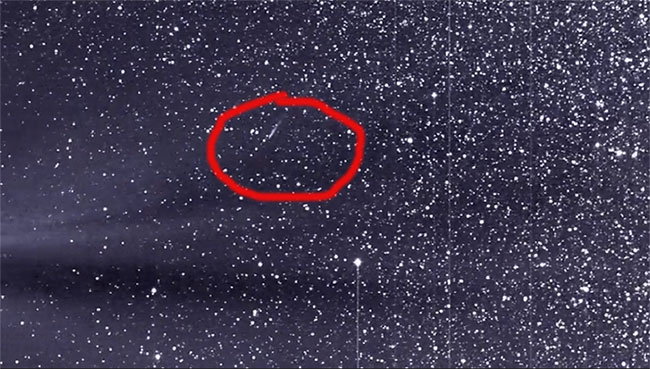NASA's STEREO-A spacecraft records comets flying through the solar wind
The STEREO-A spacecraft captures a comet ATLAS that glows with a long tail trail as it passes near the Sun on May 25 - June 1.
In the frame, ATLAS appears from above and rushes down. The comet's dust tail reflects the sunlight, which looks white. The mist flowing from the left is the solar wind composed of charged particles. Mercury also appears in images that STEREO-A records. The planet is a bright dot coming in from the left.

The comet's dust tail reflects the sunlight, which looks white.
Comet ATLAS was discovered last December. Scientists expect this comet will glow strongly when approaching the Sun, providing a good opportunity to observe. However, it began to disintegrate in April in the midst of astro-lovers. From the STEREO-A viewpoint from May 25 to June 1, the debris of this comet is still clustered close to each other like a complete celestial body.
The STEREO-A spacecraft launched into space in 2006 with the mission to study the Sun, especially at angles that humans cannot see from Earth. Another spacecraft by NASA and the European Space Agency (ESA) is also responsible for studying the Sun, Solar Orbiter, flying through the comet's tail ATLAS but not appearing in the frame.
Comet tails are of two types: the ion tail and the dust tail. The Solar Orbiter flew over the ion tail of ATLAS on May 31. According to calculations by scientists, the ship can also fly over the dust tail of this comet on 6/6.
Solar Orbiter launched in February this year. According to the original plan, it will officially operate with full functions on June 15. However, engineers have re-adjusted the schedule and commissioned important equipment early, taking advantage of the rare opportunity to study comets. This is the first time scientists have predicted the event of a ship, which was built for other purposes, flying over the tail of the comet.
- NASA 'twin ship' celebrates its 5th birthday
- NASA connected with the spacecraft that had lost its signal two years ago
- UFO stealth appeared near Mercury?
- Astronomers marvel at the new discovery about Pluto
- The solar wind is flying to the earth
- Video: NASA probe ships out of the solar system after a 40-year journey
- Comets can exist outside the solar system
- The most spacecraft flying near the Sun will be launched in 2018
- The solar wind paralyzes male Chinese contacts
- Comets of the century were destroyed when flying near the Sun.
- The spacecraft delayed flying because of the solar storm
- The comet is found deep in the solar system
 Van Allen's belt and evidence that the Apollo 11 mission to the Moon was myth
Van Allen's belt and evidence that the Apollo 11 mission to the Moon was myth The levels of civilization in the universe (Kardashev scale)
The levels of civilization in the universe (Kardashev scale) Today Mars, the sun and the Earth are aligned
Today Mars, the sun and the Earth are aligned The Amazon owner announced a secret plan to build a space base for thousands of people
The Amazon owner announced a secret plan to build a space base for thousands of people